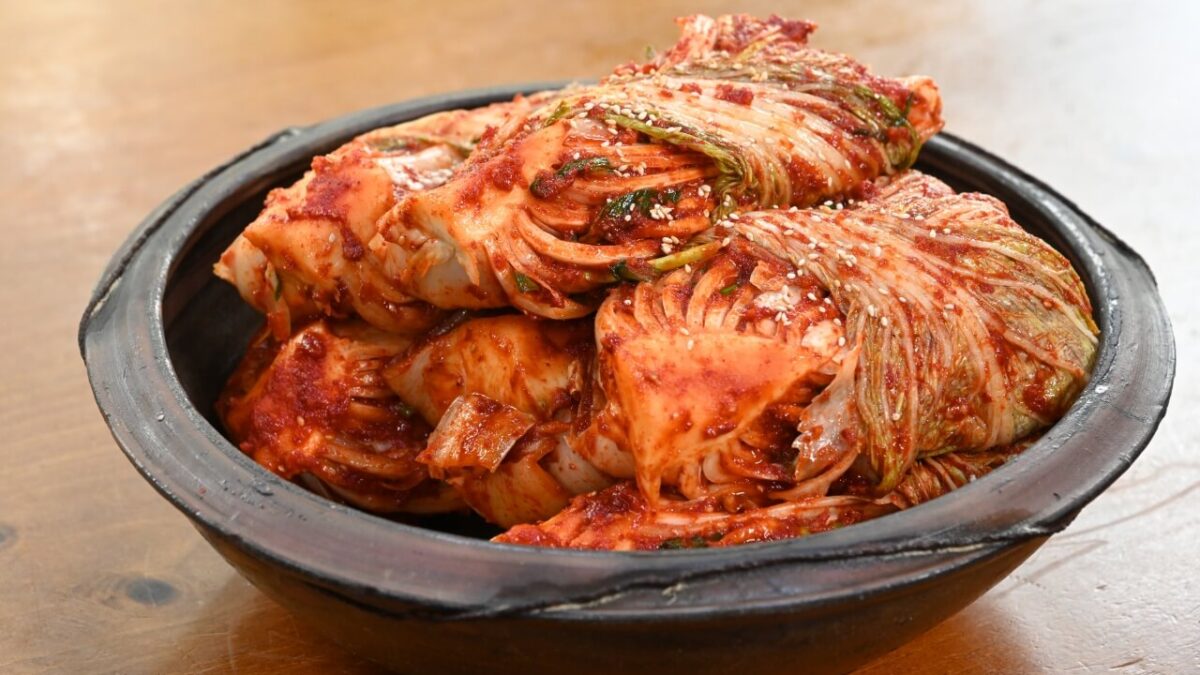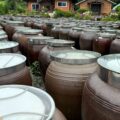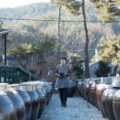Kimchi

Kimchi (김치) is a vegetable dish fermented with seasonings, agricultural products, meat, fish, and seafood, sometimes including wild herbs. Its variations are served not only in daily meals but also at weddings, holidays, birthdays, ancestral rites, and national events. While ingredients and methods differ by climate, family preference, and local traditions, kimchi making is a nationwide custom.
A Rich History
The origins of kimchi date back over 2,000 years, with early references in historical texts from the Three Kingdoms (삼국시대) period (57 av. J-C – 668 ap. J-C), alongside the development of vegetable preservation techniques during winter.
Kimchi is usually placed in jars and fermented underground for several months. There are many varieties, primarily made from napa cabbage, green onions, radish, and cucumber. Most kimchi also includes onion, chili, and garlic, enhancing its nutritional value. It is rich in calcium, vitamins A, B, C, and iron, making it one of the most nutritious foods in the world.
Originally, kimchi is simply salted and fermented vegetables, not necessary cabbage, and not necessary spicy. But by the Joseon Dynasty (1392–1897), chili peppers, introduced from the Americas in the 17th century, had transformed kimchi into the spicy version mostly knowned today.
Kimchi is sometimes called the “Korean sauerkraut,” but historically Western Sauerkraut comes from Eastern Kimchi.
Legend of Kimchi
During the Goryeo Dynasty (918–1392), a military outpost was under siege by enemy forces. The soldiers, anticipating a prolonged conflict, prepared large quantities of vegetables to sustain themselves. However, due to unforeseen circumstances, the vegetables were left exposed to the cold winter snow for an extended period. This prolonged exposure led to an unexpected fermentation process, resulting in a more pungent and flavorful kimchi. When the soldiers finally tasted it, they were surprised by the bold flavors, and the incident became a notable story in Korean culinary history.
Cultural Significance
Kimchi is deeply embedded in Korean identity. It is served at nearly every meal and has its own festival, the Kimchi Making Festival (김장철), which celebrates the annual kimjang (김장), the communal preparation of kimchi for winter.
This practice encourages participation from families, neighbors, and the community, strengthening social bonds and providing opportunities to help those in need. Kimjang was recognized by UNESCO in 2013 as an Intangible Cultural Heritage of Humanity, reflecting the value Koreans place on community, harmony with nature, and caring for neighbors.
The Kimjang Cycle
The kimjang preparation follows an annual cycle:
¤ Spring: Preparing salt.
¤ Summer: Preparing and fermenting seafood like shrimp and anchovies. Sea salt is used for brining.
¤ Late summer: Drying chili peppers and turning them into powder.
¤ Late autumn: Kimjang season, when entire villages gather to make large quantities of kimchi for winter consumption. Housewives monitor weather forecasts to choose the best dates and temperatures for kimjang.
During kimjang, skills and ideas are exchanged. Recipes and ingredients vary by region and are passed down as important family traditions, often taught by mothers to daughters or new daughters-in-law.
Science Behind Taste
The fermentation process makes kimchi rich in probiotics and vitamins, contributing to health benefits that include improved digestion and immune support. Each family often has its own unique recipe, passed down for generations, reflecting regional differences and personal tastes.



